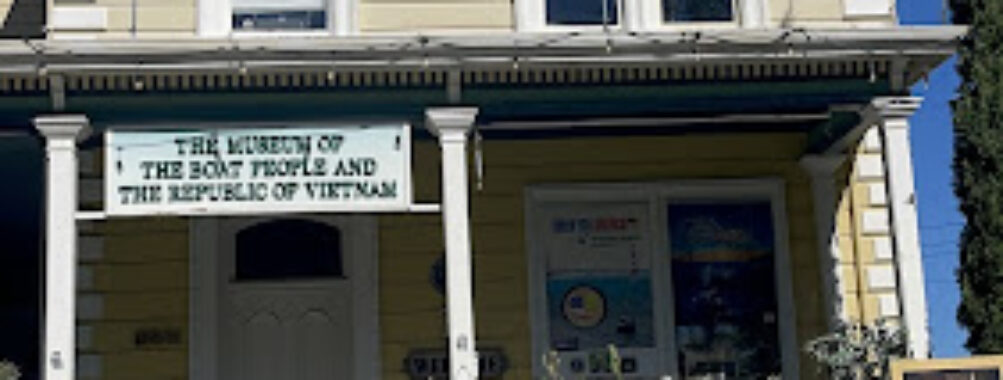
Viet Museum
Table of Contents The Viet Museum, officially known as the Museum of the Boat People and the Republic of Vietnam, stands as a deeply personal and emotional space for anyone interested in understanding one of the most defining chapters in modern Vietnamese history. It’s not a massive museum with fancy digital exhibits or flashy architecture — it’s more intimate, tucked inside the historic Greenwalt House within San Jose’s History Park. And honestly, that’s part of what makes it so special. You walk through the door and immediately feel like you’ve stepped into a living memory, a heartfelt tribute to resilience, loss, and hope. The museum tells the story of Vietnamese refugees — the “boat people” — who risked everything to escape political persecution and find freedom after the fall of Saigon in 1975. Through photographs, personal letters, uniforms, flags, and even makeshift items that refugees carried across the sea, the museum brings to life the human side of history that textbooks often gloss over. It’s not just about war or politics; it’s about family, survival, and identity. You can almost feel the weight of those stories in the air. What I personally found most moving was the quiet hum of nostalgia mixed with pride that seems to linger in every corner. There’s a sense of reverence here — not sadness exactly, but reflection. You don’t have to be Vietnamese to connect with it. I’m not, but I left with a lump in my throat and a deeper respect for the people who lived through that chapter of history. It’s one of those places that makes you pause and think about the cost of freedom and the meaning of home. While the museum doesn’t have a restaurant or on-site restroom, it’s surrounded by the amenities of History Park and nearby Kelly Park. So if you’re planning a visit, it’s easy enough to make a day of it — grab a coffee nearby, stroll through the park, and then spend an hour or two inside the Viet Museum soaking in its quiet power. If you ask me, the best time to visit the Viet Museum is during the late morning or early afternoon, especially on weekends when History Park tends to have more foot traffic and open exhibits. The lighting inside the museum feels softer then — ideal for viewing photographs and reading the small, handwritten notes displayed throughout. And if you’re the type who likes quiet reflection, weekdays are perfect. You’ll likely have the place to yourself, which gives you time to linger at each exhibit without feeling rushed. Spring and early fall are particularly pleasant times to explore the surrounding park — the weather in San Jose is mild, and the walk from the parking lot through the tree-lined paths makes for a nice prelude to your visit. Summer afternoons can get warm, so bring some water and maybe a hat if you plan to wander around afterward. The museum itself is small, so even if you only have an hour, you can still experience it fully. Getting to the Viet Museum is straightforward, especially if you’re already familiar with San Jose. It’s located within History Park, at the southern end of Kelly Park, right where Senter Road meets Phelan Avenue. There’s a designated parking lot nearby, and street parking is also available if the lot fills up. Personally, I’ve found it easiest to park in the City of San Jose lot on Phelan Avenue — it’s close enough that you can stroll right up to the museum without much hassle. If you’re coming by public transportation, several local bus routes stop within walking distance of Kelly Park. Rideshare services like Uber and Lyft also drop off conveniently near the entrance. Once inside History Park, you’ll see signs pointing toward the Greenwalt House — that’s where the Viet Museum is located. It’s a charming old building, so you can’t really miss it. For those with accessibility needs, the entrance is wheelchair accessible, though keep in mind that some areas inside the historic building have narrower pathways. There isn’t a wheelchair-accessible restroom on-site, but nearby facilities within History Park can usually accommodate visitors. If you’re planning a group trip, it’s worth calling ahead to confirm accessibility arrangements and opening hours, since they can vary depending on events or holidays. Here’s the thing about the Viet Museum — it’s not a place you rush through. It’s small, yes, but it’s packed with meaning. So take your time. Read the captions, look closely at the photographs, and let yourself feel the emotions behind them. If you’re traveling with family, especially younger kids, this can be a great opportunity to talk about history, migration, and what it means to start over in a new country. One last thing — if you happen to meet one of the volunteers or curators, take a few minutes to chat. Many are former refugees or children of refugees themselves, and their stories add a whole new layer of depth to what you see inside. I remember speaking with one older gentleman who had escaped Vietnam by boat in the late 1970s. He pointed out a photograph on the wall and said quietly, “That was my boat.” It’s moments like that which make the Viet Museum more than just a museum — it’s a living memory, kept alive by the people who lived it. So, if you’re the kind of traveler who values meaningful experiences over flashy attractions, this place is worth your time. It’s humble, heartfelt, and profoundly human. And when you leave, you’ll carry a piece of its story with you — a reminder of courage, loss, and the enduring will to start anew.Description
Key Features
Best Time to Visit
How to Get There
Tips for Visiting
Location
Places to Stay Near Viet Museum
Find and Book a Tour
Explore More Travel Guides
No reviews found! Be the first to review!